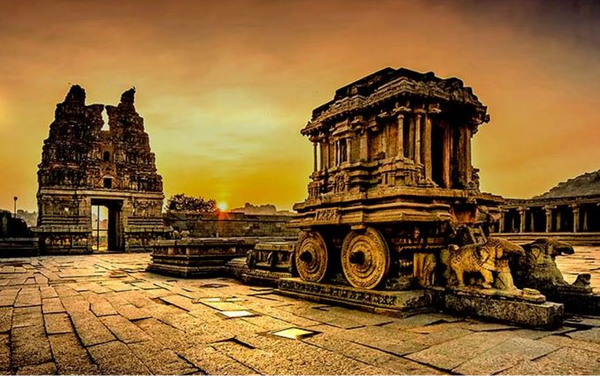
Vijayanagara is one of the newest districts of Karnataka, officially carved out of Ballari district in 2020. Named after the world-famous Vijayanagara Empire, this district is a living testament to Karnataka’s glorious medieval history. Located in the central-northeastern part of the state, it is home to Hampi, a UNESCO World Heritage Site and the former capital of the Vijayanagara Empire. The district is bordered by Ballari, Davangere, Koppal, Chitradurga, and Raichur districts.
The region of Vijayanagara thrived as one of the richest and most powerful kingdoms in South India between the 14th and 17th centuries. It was ruled by visionary kings like Harihara, Bukka, Deva Raya and Krishnadevaraya, under whom the empire reached its peak in art, architecture, trade, and administration. The legacy of the empire still stands strong in the form of magnificent stone temples, market streets, monolithic statues, and grand pavilions spread across the region.
Today, Vijayanagara is not only a cultural and historical hotspot, but also an important centre for agriculture, tourism, and mining.
Tourist Attractions
Hampi (UNESCO World Heritage Site)
The heart and soul of Vijayanagara district, Hampi was once the capital of the Vijayanagara Empire. It is dotted with ruins of palaces, temples, royal enclosures, and bazaars that stretch across a surreal boul-strewn landscape along the banks of the Tungabhadra River. Highlights include:
Cultural Significance
The Vijayanagara Empire was a beacon of religious tolerance, literary excellence, and architectural innovation. Kannada, Telugu, Tamil, and Sanskrit flourished during this period. Dance, music, and sculpture were patronized by the royal court.
Hampi Utsav, also known as Vijaya Utsav, is held annually to celebrate the cultural heritage of the empire through music, dance, processions, and drama performances. It attracts tourists from across the globe.
The region also plays a prominent role in mythological narratives from the Ramayana and the Puranas, adding spiritual depth to its historical importance.
Geography and Economy
Vijayanagara district has a semi-arid climate with black soil suitable for growing crops like cotton, jowar, maize, and groundnut. The Tungabhadra irrigation system plays a vital role in supporting agriculture. Minin, especially of iron ore, is also a key economic activity in certain areas.
Vijayanagara district is a place where history breathes through stones. It offers a unique combination of cultural depth, spiritual aura, and historical grandeur. Whether you are a pilgrim, a history enthusiast, a backpacker, or a heritage lover, Vijayanagara promises an unforgettable journey through the past.